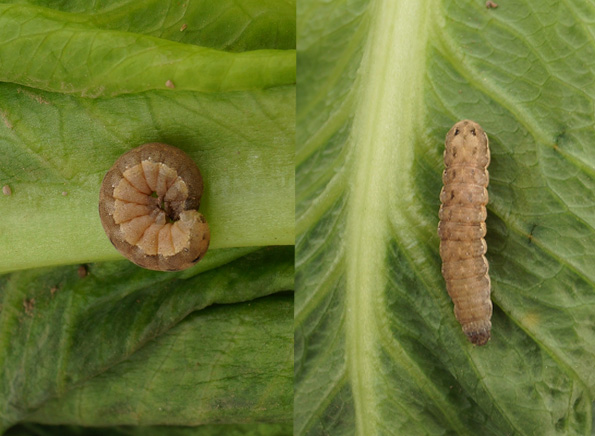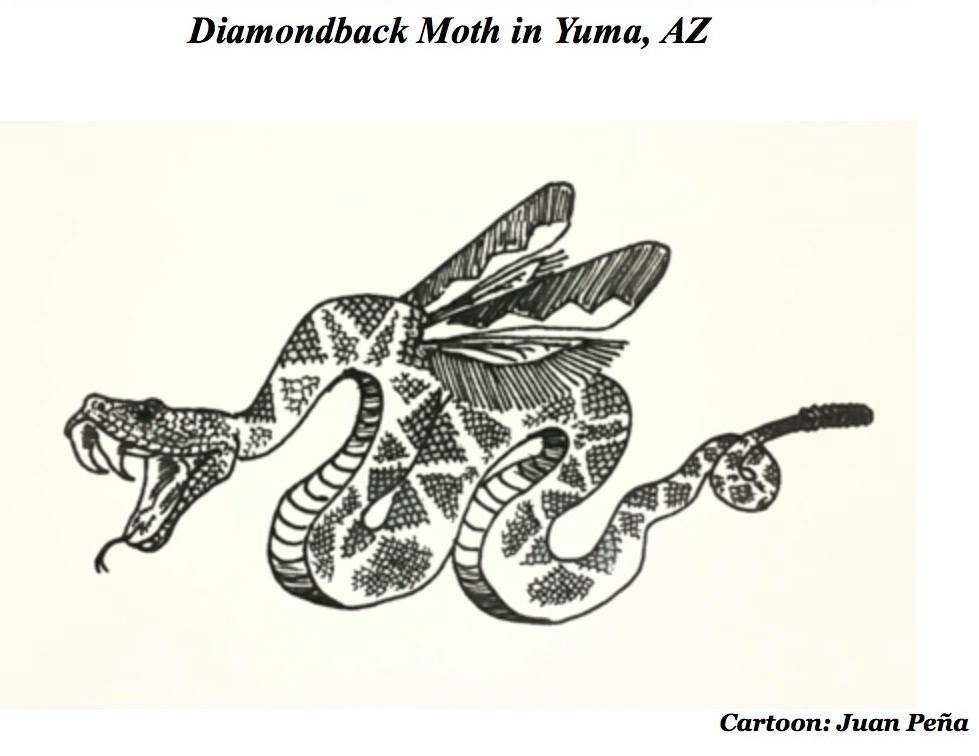
|
|
|
|

|
|||
|
|
|||
With temperatures above normal and with the small amount of rainfall we experienced yesterday, I would definitely keep an eye for aphid pressure to start to pick up s on your lettuce, celery, spinach and cole crops. An particularly green peach aphid. We’ve been picking up winged green peach aphids on our traps and I’ve also picked some up on lettuce here at YAC in the past few days. We’ve also come across a few cabbage aphid nymphs on broccoli. Experience has also shown us that aphid population growth begins to increase significantly once the weather warms up. Our local weather forecast suggests that temperatures will be in the 70’s with moderate nighttime lows for the next two weeks. Assuming the weather service is correct, these conditions may be ideal for aphid population growth. Because we’ve seen an increase in winged green peach aphids on our yellow sticky traps over the last month, PCAs should be extra vigilant in scouting for aphid colonies. Be on the lookout for foxglove aphid to become more abundant (they tend to be more biologically active under warmer temperatures that we’re experiencing now). If the field has been treated with imidacloprid at planting, then chances are you are in pretty good shape. But, continue to monitor as imidacloprid doesn’t generally last all season. Regardless of whether you find green peach or foxglove aphid the key to effective aphid management with foliar insecticide is to initiate sprays at the time apterous (wingless) aphids begin to colonize. Of course, this requires diligent scouting and sampling. On older lettuce, make sure you thoroughly examine developing heads/hearts. Fortunately, PCAs have alternatives for foliar aphid control. For more information on insecticide alternatives please visit Aphid Management in Desert Produce Crops – 2018. So, keep your eyes open for new aphid colonies and treat early to keep ahead of the populations. | |||
| Back | |||
|
For questions or comments on any of the topics please contact Marco Pena at the Yuma Agricultural Center.
|
|||
|
Home |
Cotton | Veggies |
Forages | Grains
| Citrus |
Crop x Crop Insects | Diseases| Weeds | Pesticides | Economics | News | Weather | Research | Photos | Contacts | General Info. Copyright © 2001 University of Arizona, College of Agriculture and Life Sciences Webmaster: Al Fournier (acis@ag.arizona.edu) |
|||


